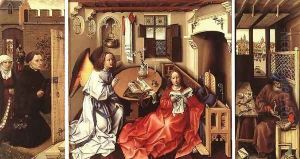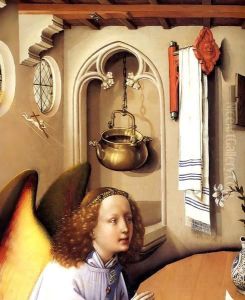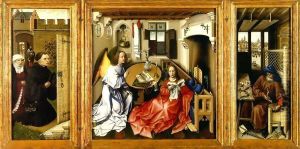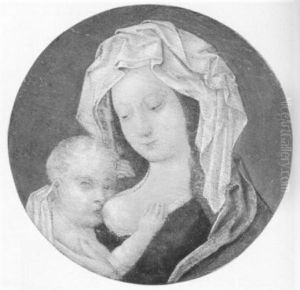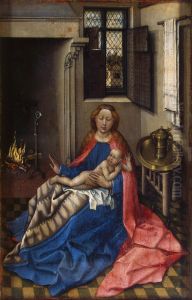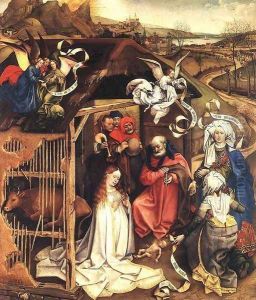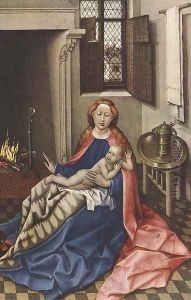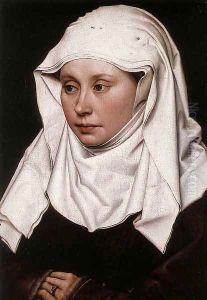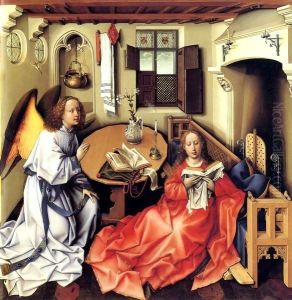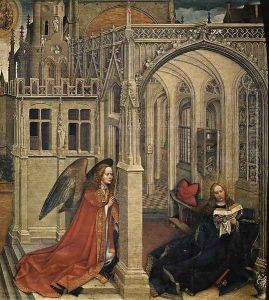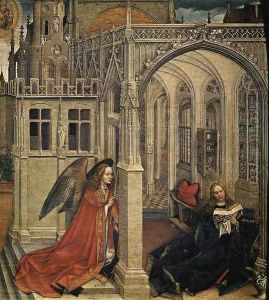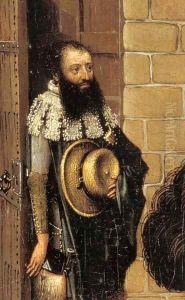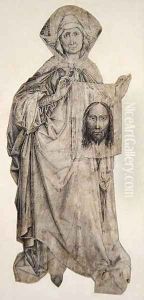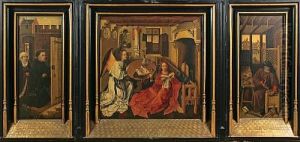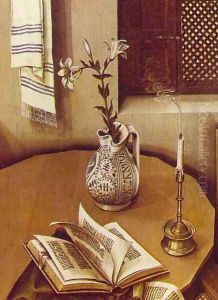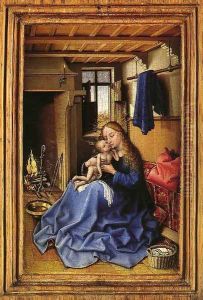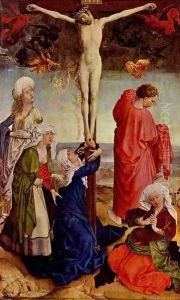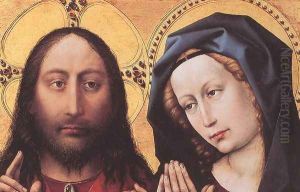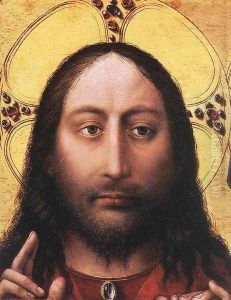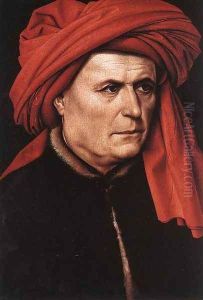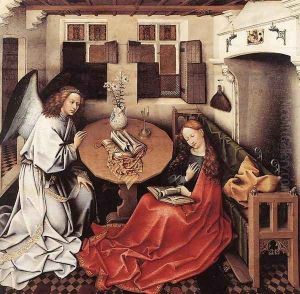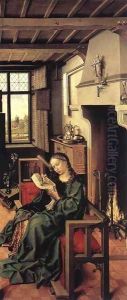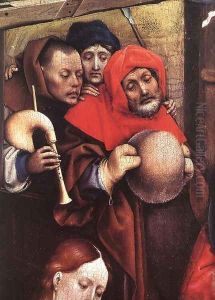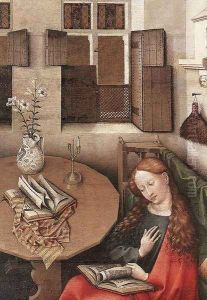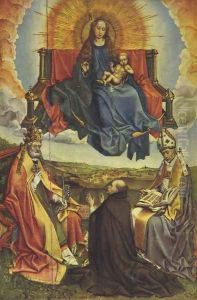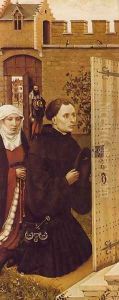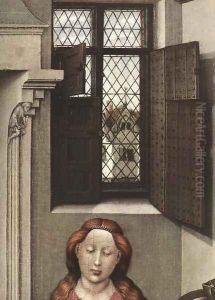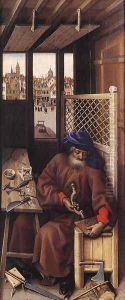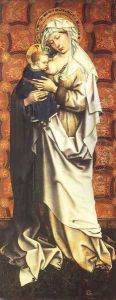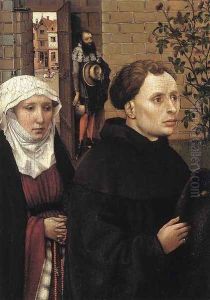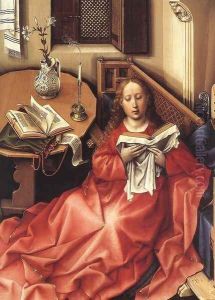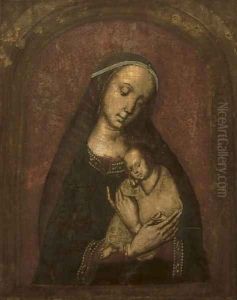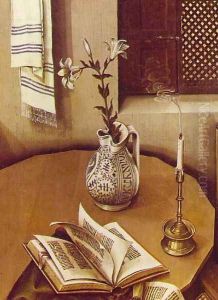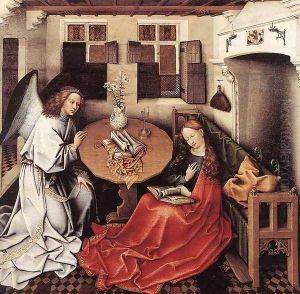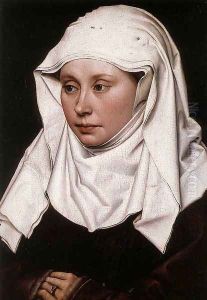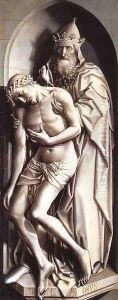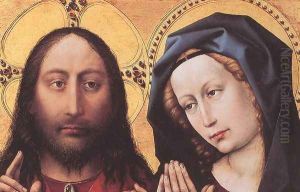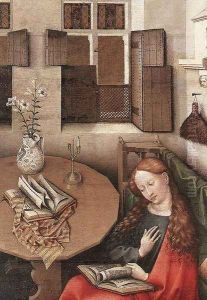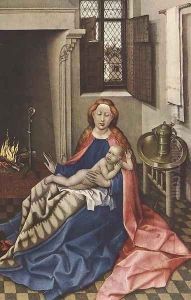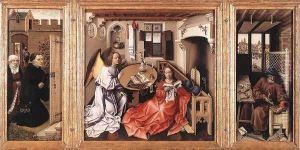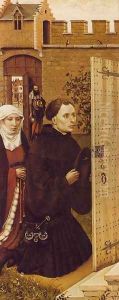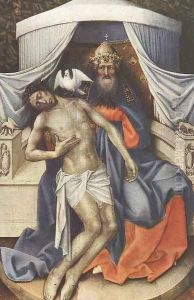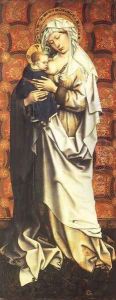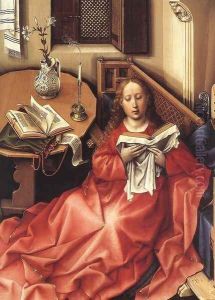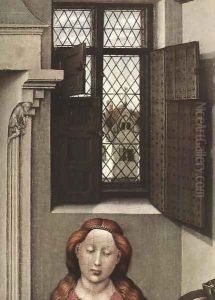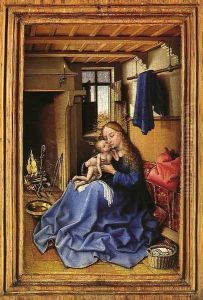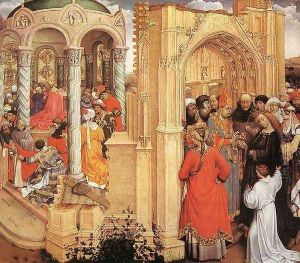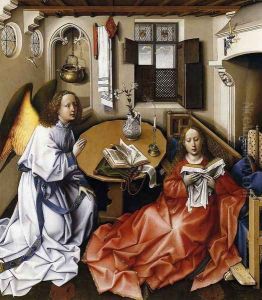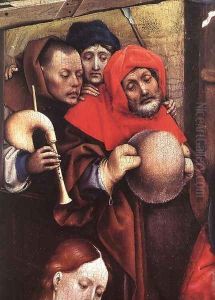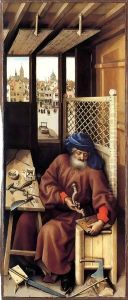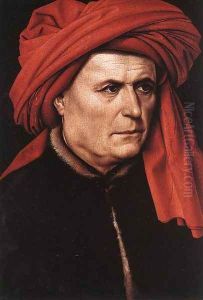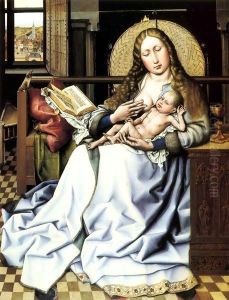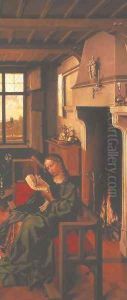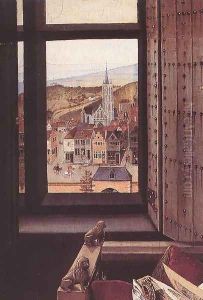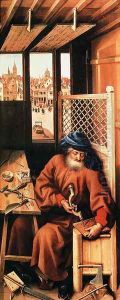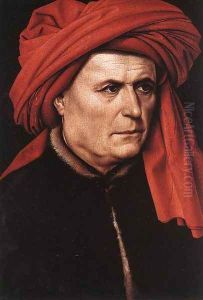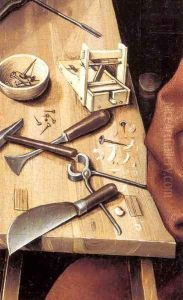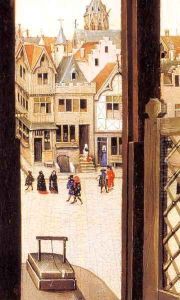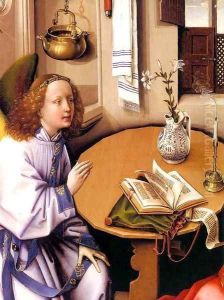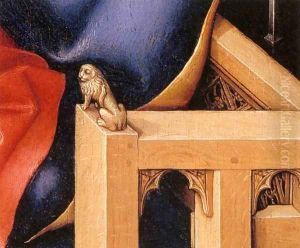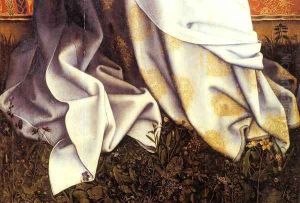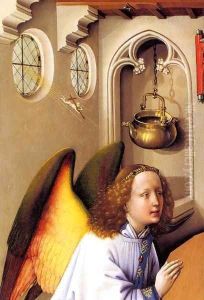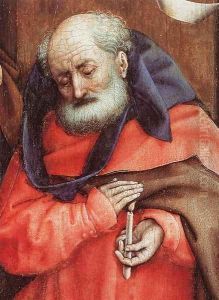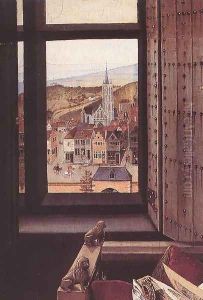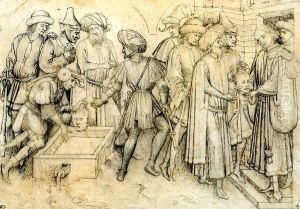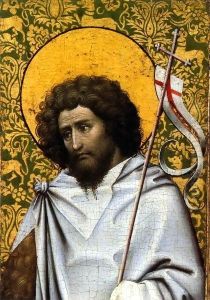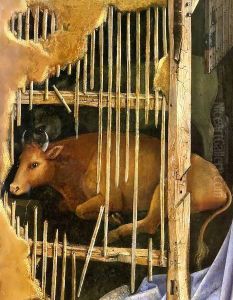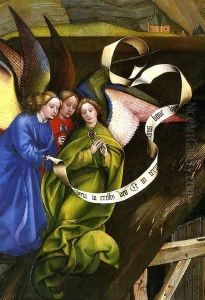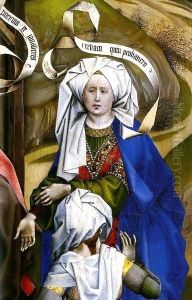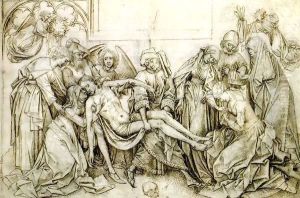Robert Campin Paintings
Robert Campin, also known as the Master of Flémalle, is considered one of the earliest and most influential practitioners of Early Netherlandish painting. His exact date of birth is not known, but he is believed to have been born around 1375 in the region of Tournai, in present-day Belgium. Campin's work marks a significant departure from the late Gothic style that dominated European art at the time, with a greater emphasis on naturalism and the use of light.
While there is little documentary evidence about Campin's life, it is known that he became a master painter in Tournai in 1406 and ran a successful workshop. His most famous apprentice was Rogier van der Weyden, who would become one of the leading Northern Renaissance artists. Campin's influence on van der Weyden suggests the considerable skill and innovative techniques that Campin must have possessed.
Campin's work is characterized by its detailed depiction of both religious and secular subjects. He is credited with helping to develop the use of oil paints to achieve depth and realism in his paintings. His compositions often feature intricate details and a rich use of color, which have led to his recognition as a master of the Early Netherlandish style.
One of his most notable contributions to art history is the development of the triptych format, which became a popular medium for altarpieces during the Renaissance. His works often include domestic interiors and portraits rendered with a remarkable sense of space and attention to the effects of light, which was revolutionary at the time.
Campin's most famous works include 'The Mérode Altarpiece' and 'The Annunciation', which are celebrated for their detailed representation of interior spaces and the human form. Although not all of his works have survived, those that have continue to be studied for their innovative techniques and contribution to the development of Renaissance art in Northern Europe.
Robert Campin died in 1444, leaving behind a legacy that would influence generations of artists. His work bridged the gap between the medieval period and the Renaissance, making him a pivotal figure in the history of Western art.
